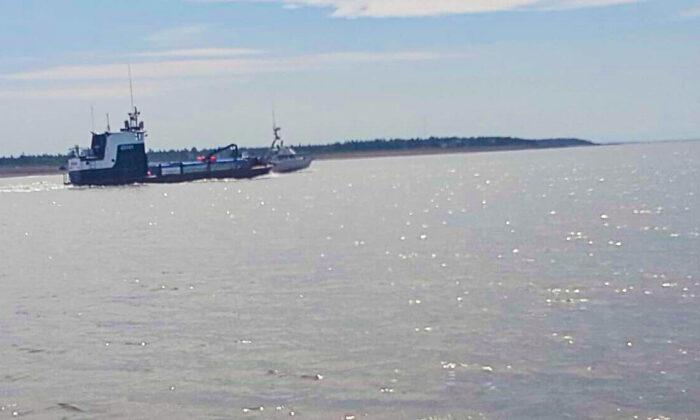Almost one million acres off the coast of Alaska will be auctioned off by the Biden administration next month for oil and gas drilling.
This is to comply with a mandate in the Inflation Reduction Act (IRA) that was part of a compromise imposed by Sen. Joe Manchin (D-W.V.) on the White House to gain his support for passage of the bill.
The news of the auctions comes a few weeks after President Joe Biden had an heated exchange with a climate protester, and declared at a rally on Nov. 6 that there would be “no more drilling,”“There is no more drilling. I haven’t formed any new drilling,” he repeated.
Biden Administration Reverses Stance on Alaskan Drilling
Cook Inlet Outer Continental Shelf Oil & Gas Lease Sale 258 will offer for auction 193 blocks of federally controlled territory in the northern part of Alaska’s Cook Inlet Planning Area.This territory stretches roughly from Kalgin Island in the north to Augustine Island in the south.
The lease sale terms include a mandate to mitigate against potentially adverse effects on protected species or resources and avoid potential conflicts associated with oil and gas development in the region.
Ironically, the territory off Alaska’s Cook Inlet is the same area that was to be auctioned off in May but was cancelled by the Biden administration after claiming a lack of interest in a lease sale.
The BOEM published a Final Environmental Impact Statement in October that analyzed measures to protect sea otters, beluga whales, and subsistence, recreational, and commercial fisheries before the sale.
Meanwhile, the announcement caused outrage from environmental groups, like the Center for Biological Diversity, which claims that drilling activity would harm endangered whale populations such as the Cook Inlet beluga and other species, reported Bloomberg.Biden Blames American Energy Shortages on Oil Industry, Despite His Opposition to Drilling
The United States has been facing high gas prices and strained supplies of oil and gas, putting massive pressure on President Biden to allow energy companies to boost production.The president has placed the blame for the energy crisis on the gas and oil industry, and has demanded that they drill more, contradicting his own hostile stance against further drilling.
“If they were drilling more, we’d have more—more relief at the pump. But the oil industry hasn’t met their commitment to invest in America and support the American people,” Biden said on Nov. 3.
He also accused the oil companies of “taking advantage” of higher prices.
The last president to lease less than 4.4 million acres in the first 19 months of their first term was President Richard Nixon.
Biden also halted the Keystone XL pipeline, which would have supplied 830,000 barrels of oil to the United States from Canada.
While American oil production has been gradually recovering from the pandemic, the pace of production has been rather sluggish, while oil prices are accelerating.
Oil production in the United States is expected to maintain a low growth rate in 2023, due to the low number of new oil rigs, fracking spreads, and lack of workers, according to Ezra Yacob, president of EOG Resources in an investors call.
Fewer oil drillers have the capacity to boost production to keep up with demand, and many are cautious about further investments in this sector, despite more available accessible leases for drilling due to the IRA mandate.
“I do think coming out of the pandemic, we’ve had a consolidation across the industry … You’ve been left with less companies, and those companies that have the size, the scale, balance sheets, things of that nature to be able to continue to drill and operate,” Yacob said.





